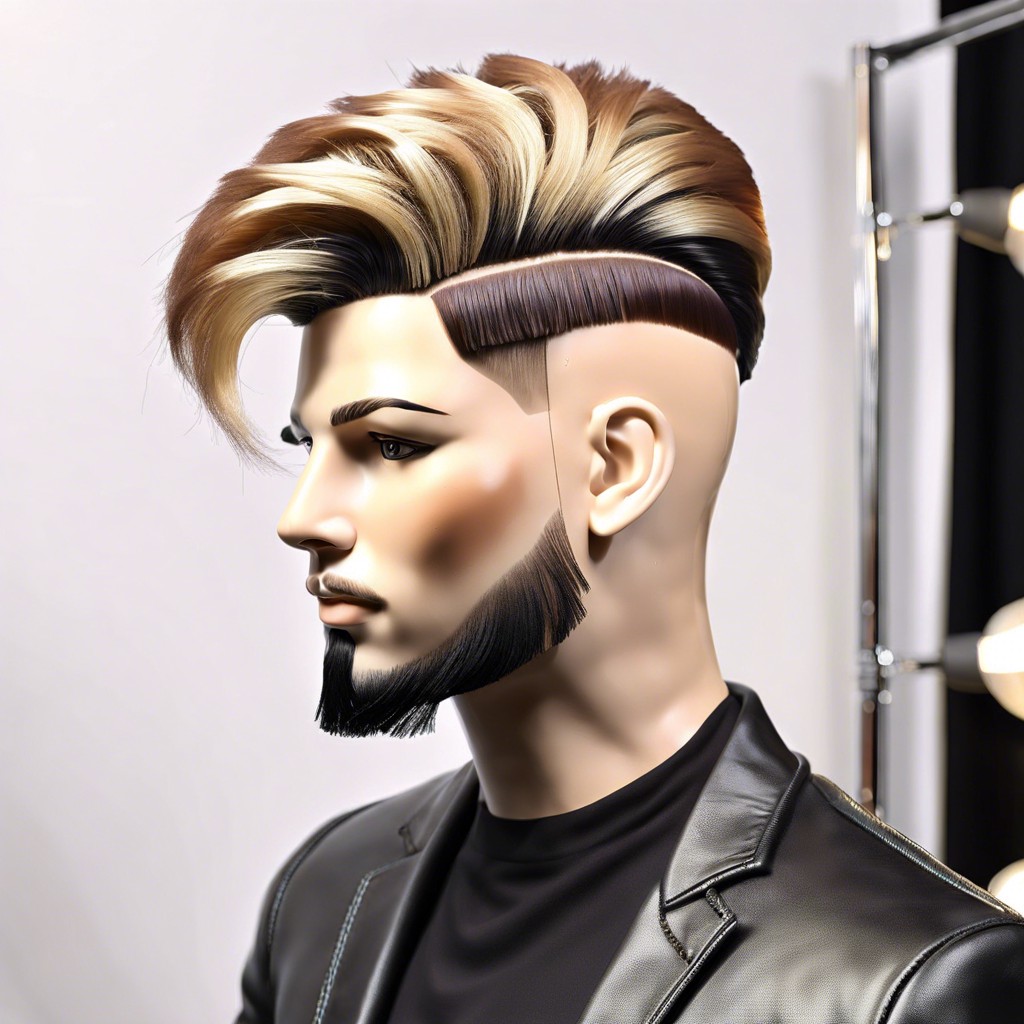Generally, it takes about 2 to 4 weeks to grow a mustache, depending on individual hair growth rates.
Wondering how long it takes to grow that majestic upper-lip adornment? Mustache growth is a wild rollercoaster influenced by genetics, hormones, and age. Dive into the curly world of growth cycles, fend off the itchiness of the awkward phase, and discover the golden grooming tips to enhance your ‘stache game. Ready to transform into the mustachioed maestro you were meant to be? Keep reading for the full hairy tale!
Key takeaways:
- Genetics, hormones, age, health impact mustache growth.
- Mustache growth cycle: anagen, catagen, telogen phases.
- Surviving the awkward growth stage: patchiness, itchiness, aesthetics.
- Proper grooming aids growth: cleanliness, moisturizing, brushing, trimming.
- Lifestyle habits: sleep, diet, hydration, stress, exercise influence growth.
Factors Influencing Mustache Growth

Genetics play the starring role in the mustache growth drama. If your family tree is brimming with bushy-lipped ancestors, you’re likely to follow suit.
Hormones, especially testosterone, are the directors behind the scenes. Higher levels often lead to faster and thicker growth. Blame or thank your biology.
Age is no small actor here either. Most men hit their mustache stride during their late teens to early twenties. If you’re younger, patience, young grasshopper.
Then there’s overall health. Nutrition, exercise, and stress levels can nudge the growth process forward or back. Eat well, stay active, chill out.
Skincare can’t be overlooked. A clean, hydrated upper lip is more welcoming to those burgeoning bristles.
Understanding the Growth Cycle
Growing a mustache is a fascinating journey through several distinct phases:
First comes the anagen phase. This is the period when your mustache hairs are actively growing. It varies in length depending on genetics but can last from a few months to several years.
Next, we have the catagen phase. This is a brief transitional stage where the hair stops growing but hasn’t yet shed. Picture it as your mustache taking a coffee break.
Finally, there’s the telogen phase. This is the resting phase. During this stage, the old hair falls out to make room for new growth.
Each hair is on its own clock, which is why you don’t go from Tom Selleck to smooth overnight. Understanding this can help set realistic expectations and make the growing journey more enjoyable.
The Awkward Stage
Ah, the joys of the mustache “adolescence” phase—awkward yet endearing. This period can be tricky as the mustache begins to sprout but doesn’t quite look like you envisioned. It’s like puberty for your face.
Expect thin, patchy growth that makes you question all your life choices. Resist the urge to shave it off; this phase is your trial by fire.
Key points to navigate this stage:
- Patchiness: Normal. Different hairs grow at different rates.
- Scruffiness: Embrace it. This is temporary.
- Itchiness: Use beard oil to soothe the skin.
- Questionable aesthetics: Stay the course and have a sense of humor.
Remember, everyone goes through it. Soon, you’ll sport a mustache that commands respect and maybe even a little jealousy.
Can Proper Grooming Techniques Promote Mustache Growth?
Absolutely, giving your ‘stache the royal treatment can have a real impact. First off, cleanliness is a must. Regularly washing the area helps remove grime and dead skin that can block hair follicles. Think of it as spring cleaning for your face.
Next up, moisturizing can work wonders. Applying a natural oil, such as jojoba or argan, keeps your mustache hair hydrated and healthy, reducing brittleness and breakages. It’s like giving each hair a mini spa day.
Brushing isn’t just for your locks up top. Using a mustache brush helps distribute oils and can stimulate blood flow to the follicles. Picture it as a gentle wake-up call for those tiny hairs.
Also, trimming strategically sounds counterintuitive but is key. Trimming split ends and stray hairs encourages thicker, even growth. Imagine you’re Michelangelo sculpting your masterpiece: every snip counts.
Can Lifestyle Habits Impact the Speed of Mustache Growth?
Sleep like a baby (or a well-groomed walrus). Good sleep is vital. It helps your body repair and grow hair, including your prized mustache.
Feast on a balanced diet. Load up on proteins, vitamins, and minerals. Think nuts, fish, eggs, and leafy greens. Your mustache will thank you.
Hydrate, hydrate, hydrate. Water isn’t just for plants. Your follicles need hydration, too. Birdbath optional.
Say goodbye to stress. Chronic stress releases cortisol, which can slow down hair growth. Find your happy place, whether it’s yoga or binge-watching mustache grooming tutorials.
Exercise regularly. Increased blood flow to your face helps nourish those hair follicles. Plus, a post-workout mustache twirl is always satisfying.
Avoid smoking like it’s the 19th century. Cigarette toxins can stifle hair growth. Skip the smokes, save the ‘stache.
Are There Medical Treatments That Can Boost Mustache Growth?
There are medical treatments that can potentially ramp up your mustache game. Minoxidil, a topical solution best known for its use on scalp hair, is one option that some find effective for facial hair growth. It’s not just marketing lingo; it gets those follicles firing on all cylinders.
Then there’s Finasteride, originally intended for hair loss on the head, but some folks swear by its impact on mustache growth. Just remember, it’s a prescription medication. A doctor’s note isn’t just a suggestion, it’s a must.
Lastly, there’s Biotin supplements. While not exactly a magic potion, they can definitely slap a healthy, shiny sticker on your mustache’s progress chart. They help improve keratin infrastructure, and anything good for hair is good for your ‘stache, right?


